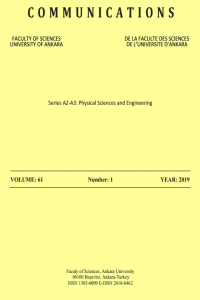Research Article
Year 2019,
Volume: 61 Issue: 1, 68 - 75, 30.06.2019
Abstract
It is discussed that
economic development has an essential effect on the country’s CO2 emission
which plays an important role in global warming. In this research well-known
machine learning algorithm Extreme Learning Machine, ELM, is used to
investigate the relationship between CO2
emission and energy intensity for countries in OECD. The results indicate a
strong correlation and the method perform well for estimation.
References
- I. Ozturk and A. Caravci, CO2 emissions, energy consumption and economic growth in Turkey. Renew Sustain Energy Rev 2010;14:3220–5.
- BP. BP statistical review of world energy June 2016; 2016. http://www.bp.com/ statisticalreview.
- SJ. Davis, K. Caldeira and HD. Matthews, Future CO2 emissions and climate change from existing energy infrastructure. Science 2010;329:1330–3.
- P.R. Ehrlich and J.P. Holdren, Impact of population growth. Science 1971, 3977, 1212–1217.
- A. Shi, The impact of population pressure on global carbon dioxide emissions, 1975–1996: Evidence from pooled cross-country data. Ecol. Econ. 2003, 1, 29–42.
- M. Wang and C. Feng, Decomposition of energy-related CO2 emissions in China: an empirical analysis based on provincial panel data of three sectors. Appl Energy 2017;190:772–87.
- B. Lin and H. Liu, CO2 emissions of China’s commercial and residential buildings: Evidence and reduction policy. Build Environ 2015;92:418–31.
- www.worlddatabank.com
- J. Long, L. Shuai, H. Bin and L. Mei, A survey on projection neural networks and their applications Applied Soft Computing, Volume 76, 2019, Pages 533-544
- G.B. Huang, Q.Y. Zhu and C.K. Siew, Extreme learning machine:Theory and applications, Neurocomputing 70 (2006a) 489501
- S. Gang and D. Qun, A novel double deep ELMs ensemble system for time series forecasting , Knowledge-Based Systems, Volume 134, 2017, Pages 31-49.
- K. Marius, Y. Yang, L. Caihong, C. Yanhua and L. Lian Mixed kernel based extreme learning machine for electric load forecasting Neurocomputing, Volume 312, 2018, Pages 90-106
Year 2019,
Volume: 61 Issue: 1, 68 - 75, 30.06.2019
Abstract
References
- I. Ozturk and A. Caravci, CO2 emissions, energy consumption and economic growth in Turkey. Renew Sustain Energy Rev 2010;14:3220–5.
- BP. BP statistical review of world energy June 2016; 2016. http://www.bp.com/ statisticalreview.
- SJ. Davis, K. Caldeira and HD. Matthews, Future CO2 emissions and climate change from existing energy infrastructure. Science 2010;329:1330–3.
- P.R. Ehrlich and J.P. Holdren, Impact of population growth. Science 1971, 3977, 1212–1217.
- A. Shi, The impact of population pressure on global carbon dioxide emissions, 1975–1996: Evidence from pooled cross-country data. Ecol. Econ. 2003, 1, 29–42.
- M. Wang and C. Feng, Decomposition of energy-related CO2 emissions in China: an empirical analysis based on provincial panel data of three sectors. Appl Energy 2017;190:772–87.
- B. Lin and H. Liu, CO2 emissions of China’s commercial and residential buildings: Evidence and reduction policy. Build Environ 2015;92:418–31.
- www.worlddatabank.com
- J. Long, L. Shuai, H. Bin and L. Mei, A survey on projection neural networks and their applications Applied Soft Computing, Volume 76, 2019, Pages 533-544
- G.B. Huang, Q.Y. Zhu and C.K. Siew, Extreme learning machine:Theory and applications, Neurocomputing 70 (2006a) 489501
- S. Gang and D. Qun, A novel double deep ELMs ensemble system for time series forecasting , Knowledge-Based Systems, Volume 134, 2017, Pages 31-49.
- K. Marius, Y. Yang, L. Caihong, C. Yanhua and L. Lian Mixed kernel based extreme learning machine for electric load forecasting Neurocomputing, Volume 312, 2018, Pages 90-106
There are 12 citations in total.
Details
| Primary Language | English |
|---|---|
| Journal Section | Review Articles |
| Authors | |
| Publication Date | June 30, 2019 |
| Submission Date | February 11, 2019 |
| Acceptance Date | May 24, 2019 |
| Published in Issue | Year 2019 Volume: 61 Issue: 1 |
Cite
Communications Faculty of Sciences University of Ankara Series A2-A3 Physical Sciences and Engineering
This work is licensed under a Creative Commons Attribution 4.0 International License.



